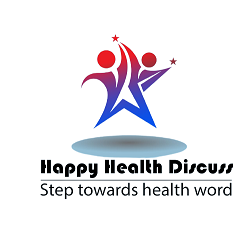There are various non-opioid pain relief solutions that may help patients reduce the need for opioids while limiting any associated side effects and risks such as addiction.
Holistic pain management is a safe and effective solution that addresses patients’ overall health needs and healing. This approach addresses the root causes of their discomfort while avoiding potential issues like side effects and addiction.
Massage
Pain caused by injury or disease is an all-too-common and debilitating affliction, impacting millions each year, and can be difficult to manage.
Doctors, pharmacists, and pain specialists are increasingly suggesting safer alternatives to opioids, including over-the-counter and prescription NSAIDs such as ibuprofen (Advil) and naproxen (Aleve), nondrug therapies like massage as well as other non-medication solutions like physical therapy.
These alternative treatments are much safer and often more effective for chronic pain relief than opioids; plus they don’t cause addiction or side effects like opioids do.
Scientific literature increasingly indicates the effectiveness of nonopioid therapies in improving pain and function; however, their limited access and unavailability through health insurers remain significant barriers for many patients. This paper addresses this gap by detailing and comparing patients, primary care provider (PCP), acute care providers (A/C), and their experiences accessing alternatives to opioids for managing pain management.
Acupuncture
Acupuncture is an all-natural and holistic solution to pain management that works by reducing inflammation, aiding tissue repair, and relieving muscle spasms. Studies have proven its success in helping with various conditions like chronic pain and arthritis.
Acupuncturists use needles to stimulate acupuncture points located along energy channels called meridians in order to balance and enhance the flow of qi (energy). When these points are stimulated, signals are sent directly to your brain which trigger the natural pain-fighting response of your nervous system and release tight muscles while improving blood circulation.
Acupuncture has proven itself effective at treating numerous conditions, from stress and anxiety to headaches. Studies also indicate its benefits in managing side effects associated with chemotherapy treatments and multiple sclerosis; aromatase inhibitor-associated arthritis as well as aromatase inhibitor-related arthritis are among those it could potentially help.
Tramadol
Tramadol can serve as an effective alternative to opioid pain medications. As a centrally acting analgesic (pain reliever), Tramadol works by binding to opioid receptors in the brain and blocking their release, leading to reduce serotonin and norepinephrine production and decreasing pain levels.
Sulfa opioids are gentler opioids than their counterparts morphine and oxycodone, with less risk of dependency or addiction. Sulfa can be use to treat moderate to severe pain including post-surgical discomfort.
Tramadol can be taken as a tablet, solution (liquid), and extend-release tablet/capsule when prescribe by a doctor and taken orally as need – typically every 4-6 hours. Buy Tramadol Online is the first choice in the USA. get overnight delivery with discounts.
Before prescribing pain medication to you, your physician will assess any risk of misuse or addiction. If they detect this as being an issue for you, another pain reliever may be prescribe and liver function and blood levels monitors while using this drug as part of treatment.
Meditation
Meditation is a holistic practice that can reduce stress and anxiety, increase self-awareness and tolerance of pain tolerance, as well as promote overall well-being. There are various types of meditation practices such as mindfulness, body scan, loving-kindness, and transcendental meditation to choose from.
Meditation’s chief advantage lies in its ability to reduce brain perception of pain. This may prove particularly helpful for people suffering from chronic discomfort as it could reduce the need for opioid painkillers.
Researchers have recently discovered that meditation alters the activity levels in certain parts of the brain that are involved with pain processing, including the primary somatosensory cortex, anterior insula, and anterior cingulate cortex.
Researchers discovered that changes in brain activity led to decreased pain intensity and an attenuated inflammation response, both key components in combatting chronic pain that can worsen over time, leading to additional health problems like high blood pressure or atherosclerosis.
